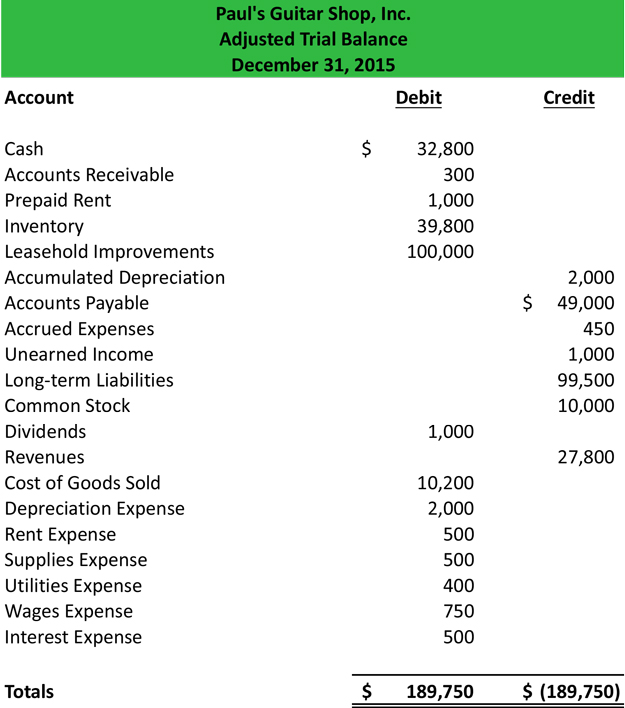What is an Adjusted Trial Balance?
Contents [show]
An adjusted trial balance is a listing of all company accounts that will appear on the financial statements after year-end adjusting journal entries have been made.
Preparing an adjusted trial balance is the fifth step in the accounting cycle and is the last step before financial statements can be produced.
Format
An adjusted trial balance is formatted exactly like an unadjusted trial balance. Three columns are used to display the account names, debits, and credits with the debit balances listed in the left column and the credit balances are listed on the right.
Like the unadjusted trial balance, the adjusted trial balance accounts are usually listed in order of their account number or in balance sheet order starting with the assets, liabilities, and equity accounts and ending with income and expense accounts.
Both the debit and credit columns are calculated at the bottom of a trial balance. As with the accounting equation, these debit and credit totals must always be equal. If they aren’t equal, the trial balance was prepared incorrectly or the journal entries weren’t transferred to the ledger accounts accurately.
As with all financial reports, trial balances are always prepared with a heading. Typically, the heading consists of three lines containing the company name, name of the trial balance, and date of the reporting period.

Preparation
There are two main ways to prepare an adjusted trial balance. Both ways are useful depending on the site of the company and chart of accounts being used.
You could post accounts to the adjusted trial balance using the same method used in creating the unadjusted trial balance. The account balances are taken from the T-accounts or ledger accounts and listed on the trial balance. Essentially, you are just repeating this process again except now the ledger accounts include the year-end adjusting entries.
You could also take the unadjusted trial balance and simply add the adjustments to the accounts that have been changed. In many ways this is faster for smaller companies because very few accounts will need to be altered.
Note that only active accounts that will appear on the financial statements must to be listed on the trial balance. If an account has a zero balance, there is no need to list it on the trial balance.
Example
Using Paul’s unadjusted trial balance and his adjusted journal entries, we can prepare the adjusted trial balance.

Once all the accounts are posted, you have to check to see whether it is in balance. Remember that all trial balances’ debit and credits must equal.
Now that the trial balance is made, it can be posted to the accounting worksheet and the financial statements can be prepared.




